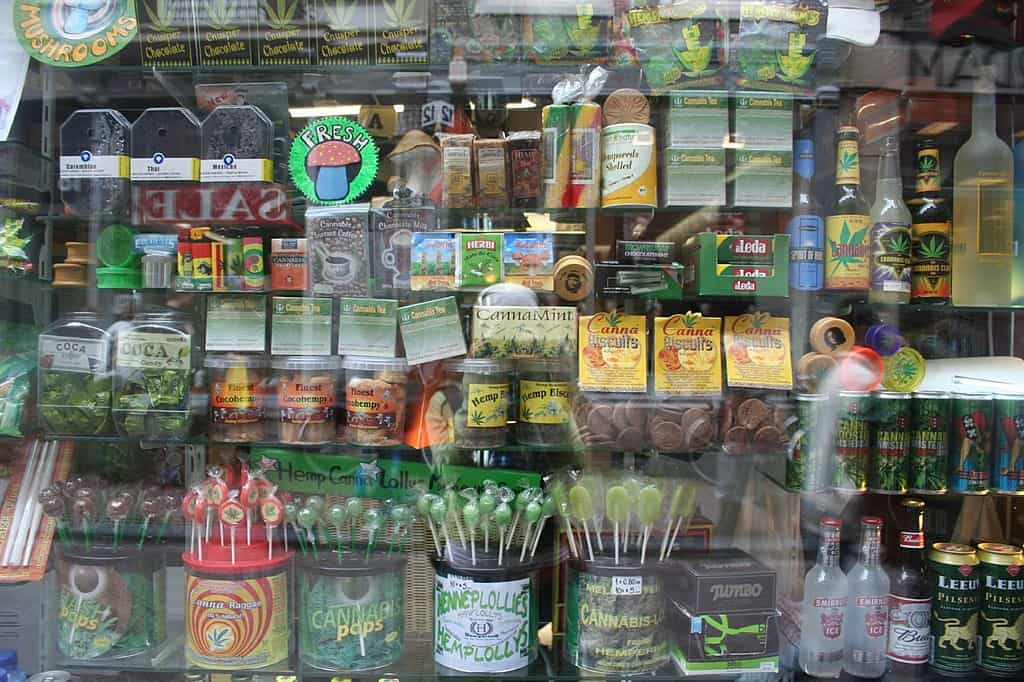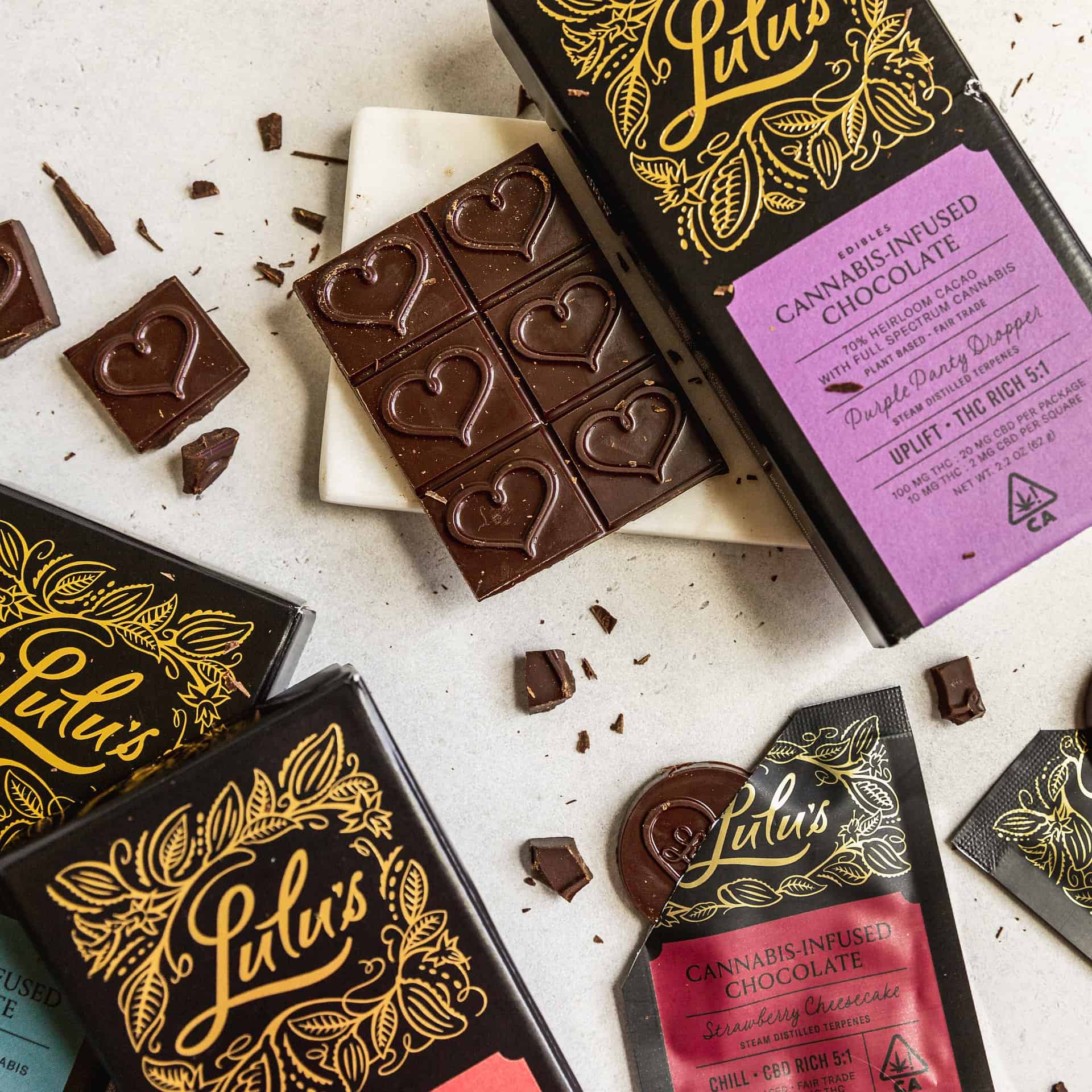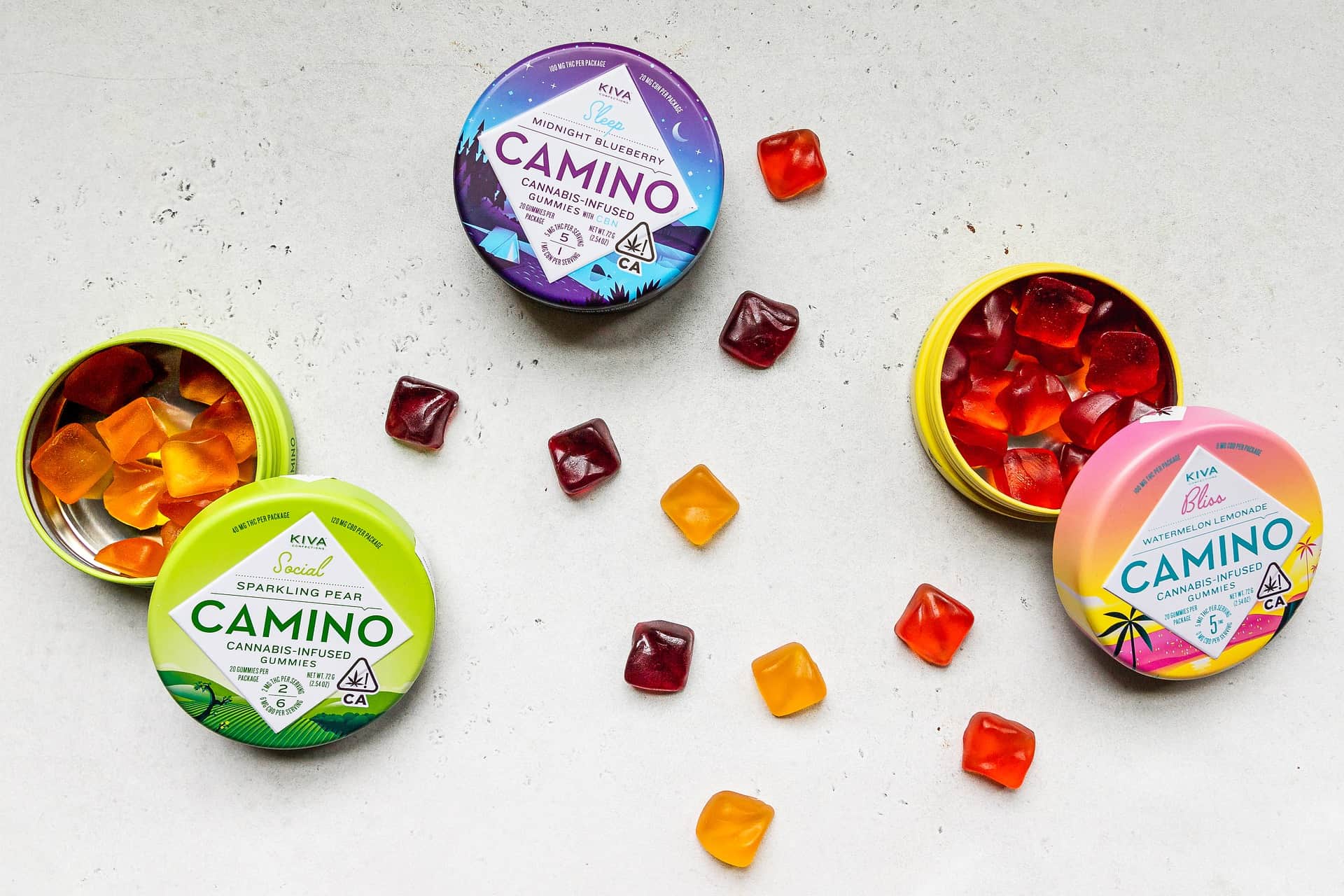
With the cannabis industry on the rise in the United States, many Americans have been introduced to legal and easily accessible weed–in the many forms that the drug takes. While most people are familiar with smoking as a method of ingestion, cannabis as food items is less common and has different effects and factors that must be taken into consideration.
How Do Edibles Differ from Inhaling Marijuana?

Photo from Wikipedia Commons
Smoking or vaping marijuana usually creates an effect within minutes or even seconds. This is because when marijuana is inhaled, THC and other compounds in marijuana rapidly pass from the lungs into the bloodstream. From there, blood cells quickly carry then throughout the body, across the blood-brain barrier, and allow people to access the high – usually a relaxing and pleasant euphoria. Consuming cannabis-infused food (edibles) allow one to feel the effects of cannabis without having to potentially harm their lungs, and as an added benefit is a much more natural way of consumption since everyone is a natural expert on eating and drinking.
However, there are disadvantages to consuming edibles instead of more traditional methods – the effects of edibles are extremely variable; sometimes taking as little as 30 minutes to feel its effects and sometimes taking as long as 3 hours. The length of the psychoactive effects also last much longer – while the effects from inhaling marijuana are generally dissipated within an hour or two, the effects of edibles can last for up to 6 hours.
This is due to how THC is processed differently when its absorbed through the gut compared to the lungs. Instead of being carried in the bloodstream, the compounds are metabolized instead by the liver when you consume cannabis. THC is metabolized in the liver into a compound called 11-hydroxy-THC, which is much more potent than THC, has a longer half-life (meaning a longer effect), and is generally much more sedating than its inhaled counterpart. While the compound is technically different from THC, it is worth noting that 11-hydroxy-THC will still show up on drug tests just as much as smoked or vaped THC, meaning edibles are NOT an effective alternative to get high if one is trying to avoid detection from a drug test.
What Kinds of Marijuana Edibles Are There?

Edibles come in a variety of forms. While THC could technically be incorporated into any food item, stores generally sell edibles in the form of brownies, gummies, and other sweets. The sugar content in dessert food helps masks the taste of marijuana, which is present in the foods and is generally considered unpleasant. THC is also fat-soluble and the fat content in these desserts bind the THC content to it, allowing for better absorption. THC and CBD infused drinks are also common and have a similar effect to food-based edibles. It is worth noting that drinks effects tend to work much more quickly than solid foods, due to the stomach easier time passing it through. THC can also be absorbed through the mouth and gums, allowing for a quicker initial absorption compared to solid foods. Edibles also come in the forms of capsules, tinctures, and lozenges, which are all safe to use though may have different doses than typical edibles.
Potency of marijuana is typically noted as a percentage of THC compared to the actual weight of the product. For example, 1 gram of THC oil may be set at 80% potency. Edibles typically state the exact milligram count of cannabinoids within the product, as well as the CBD content in the edible. This means that a 100mg chocolate bar will have 100mg of THC in it, which can be evenly divided into separate serving. Edibles can have varying levels of THC, CBD, and the ratio between them. Higher ratios of CBD in relation to THC tend to be less inebriating compared to high amount of THC.
What Is a Typical Weed Edibles Dosage?
There is technically no typical edible dosage–while a single serving is classified as 10mg, what would constitute a reasonable effect entirely depends on a variety of factors such as general constitution, previous marijuana consumption, body chemistry, tolerance, and the severity of the high that the user is seeking.
While this is true, there are still some general guidelines that can help you in succeeding in achieving an optimal dose.
Do note that due to the delayed effect of edibles, as well as the well-documented potency of edibles, it’s generally better to play it safe. A common pitfall for users new to edibles is to redose on edibles too early, claiming that the dose was too low to achieve an effect, only for the double amount to cause an unpleasant high.
1-3 mg THC: Generally, the lowest dose that will cause any noticeable change. This dose is recommended for completely new users or for regular users that are looking for mild relief for symptoms such as insomnia, pain, anxiety, or loss of appetite. Regular and more experienced users are likely to feel little to no effect from this dosage, and even new users may not experience much of an effect
3-10mg THC: A more standard dose, consuming 3 to 10 mg of THC will result in a reasonable effect for recreational use. Patients looking for more enhanced relief of the aforementioned symptoms can look to this range. Positive effects such as euphoria and relaxation are more prominent at this dosing range, and negative effects such as impaired coordination and perception are also relevant here. It is unlikely that this dose will cause any extreme negative effect, even among virgin users.
10-30mg THC: A strong dose of THC not recommended for people who do not regularly consume cannabis or are otherwise unfamiliar with its effect. At this range that are severe euphoric effects, as well as increased drowsiness, increase impairment, and a loss of coordination. This is a dose recommended for people who have experimented more extensively with marijuana edibles in the past, or for those whose GI tracts do not seem to absorb the THC compounds as well as expected. It’s worth noting that edible effects, due to the different absorption method, often have a different tolerance compared to inhaled tolerance. Even if a user is experienced in inhaling marijuana, it is not recommended to start at this dose since your tolerance could vary widely.
30- 100mg THC: Effects at this level of dosage create extreme levels of previously mentioned effects. The level of intoxication here is extreme and is only recommended for very experienced users or those that have developed a heavy tolerance. Serious impairment occurs at this level with a strong loss of coordination and effects on perception. Unpleasant side effects become more and more prominent and feelings such as nausea, dizziness, increased heart rate, and paranoia are all commonplace for less experienced users. This level of dosage is typically reserved to those that have acquired a very strong tolerance followed by months of usage or patients with serious conditions such as cancer or other diseases that require high levels of pain management.
How to Maximize the Effect of Marijuana Edibles

Eating a light snack often helps kick start digestion, which in turn allows the absorption process to begin or accelerate – be wary of eating too much or a full meal, as some people, in turn, do not get as much of an effect. Users completely new to cannabis also may require several separate doses before they get their first real high. It’s recommended that even if you don’t feel anything from your first dose of cannabis to wait 24-48 hours and try again with the same dose before. After repeating 2-3 times only then should a new user up the dosage. There is also a small subset of persons that are unable or in which it is extremely difficult to feel any effects from THC absorbed through digestions. It’s recommended for those users to simply stick to more traditional method of inhalation, or if it that is not an option to try alternatives such as tinctures which utilize oral absorption via the blood vessels under the tongue.
What if I Consume Too Strong of a Dose?
It is very important to take edibles in a safe and secure environment–overdose effects such as paranoia and anxiety are much more easy to manage if the user is in an environment that they’re familiar with. It’s recommended that for your first dose of cannabis to take it with a responsible, ideally experienced friend or family member, who stays sober in order to help maintain a calm and peaceful environment.
Overdose simply means that the amount of THC taken is above to optimal dose, leading to negative side effects. It’s important to note that it is physically impossible to overdose from THC and that there have been no recorded deaths due to a THC overdose. During a THC overdose, it’s recommended to remember this fact as self-reassurance will likely help with symptoms of anxiety and paranoia. Staying hydrated is also very important – THC is a strong diuretic and causes symptoms of dry mouth which can be assuaged by constantly hydrating. This is extra true if negative side effects such as vomiting and diarrhea are present – in very extreme cases where vomiting and diarrhea do not end, then an IV may be necessary in order to rehydrate, though these cases are extraordinarily rare.
CBD is often used as an antidote to THC overconsumption–despite being a compound found in marijuana, CBD has been well researched to mitigate some of the effects of THC and allow for a more balanced high, which may help during an overdose. Having CBD oil can be an effective method of curbing the strong negative effects of a THC overdose.
What if I Make Homemade Cannabis Edibles?
Cannabis-infused foods can be made from scratch at home using a variety of different methods and lead to many benefits such as being able to approximately choose how strong your edibles are and have a more consistent taste. While it’s possible to add more or less amount of marijuana to your edibles, it’s much more difficult to dose to the precise amount that edibles from legal, recreational stores are dosed to. Therefore, it’s recommended that only experienced users make their own edibles, as they will be better equipped to both dose their edibles to their desired amount, and have been mental and physical tools developed in order to deal with a THC overdose–something that’s much more likely due to the widely varying nature home-cooking edibles can bring. Cannabis-infused edibles are often made from cannabis-infused butter and oil using dry flower, as a fat-soluble base is needed to carry the THC from the dry flower.
Disclaimer:
You knew it was coming, the text in this article is informational only and not intended to be legal or medical advice or recommendations in any way. Use this information as you will with your own discretion. The bottom line is – be safe, follow the rules, and enjoy some Mary Jane while you are in the Bicentennial State for your Rocky Mountain High!



